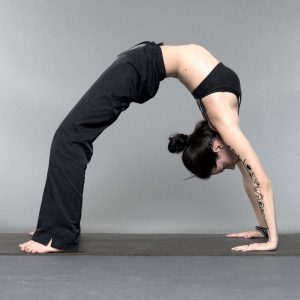Cultivating Awareness by Asana or Posture
 The first two members of the eightfold path, yama and niyama, strictly regulate the yogi social contacts and his personal life. This is intended to reduce the production of unwholesome volition which would only increase his stock of karma involving him further in conditioned existence. His sole goal is to eradicate completely all karma stored in his depth consciousness in the form of subliminal impressions (samskara). For this transformation of consciousness maximum quiet is called for. The yogi has to establish himself in a place where his inner work will not be interrupted by external stimuli.
The first two members of the eightfold path, yama and niyama, strictly regulate the yogi social contacts and his personal life. This is intended to reduce the production of unwholesome volition which would only increase his stock of karma involving him further in conditioned existence. His sole goal is to eradicate completely all karma stored in his depth consciousness in the form of subliminal impressions (samskara). For this transformation of consciousness maximum quiet is called for. The yogi has to establish himself in a place where his inner work will not be interrupted by external stimuli.
The first step is to immobilize the body in one of the many ‘postures’ prescribed for meditative absorption in the yoga texts. The posture or asana keeps the body steady and relaxed. By withdrawing and folding together his limbs, the yogi achieves an immediate change of mood which greatly aids his single – mindedness. The history of the meditative postures reaches far back into the past. Probably the earliest depiction of as asana is on a seal found during the excavations of Mohenjo Daro in the Indus valley. It is impossible to say when and where they yogic ‘posture’ first originated. It is presumably a natural development of the crouched position so common among eastern people who generally chairs.
Asana meant at first only meditative seat. During the rise of Tantrism, however at first, when the body moved more into the focus of attention, the physiological side –effects of asana began to be seriously investigated. The heyday of the asana as a meditative and health – giving practice was connected with the emergence of Hatha yoga. The asana was made up into instrument for strengthening and perfecting the physical frame so that it might endure the stress of the vigorous spiritual exercises demanded in Tantrism. The description of a particular ‘posture’ in the yoga texts is often appended with the refrain tat – sarva – vyādhi – vinasakam or ‘this is the destroyer of all diseases’. Patanjali prescribes no special posture but emphasizes that it should be steady and comfortable, to cultivate awareness.
